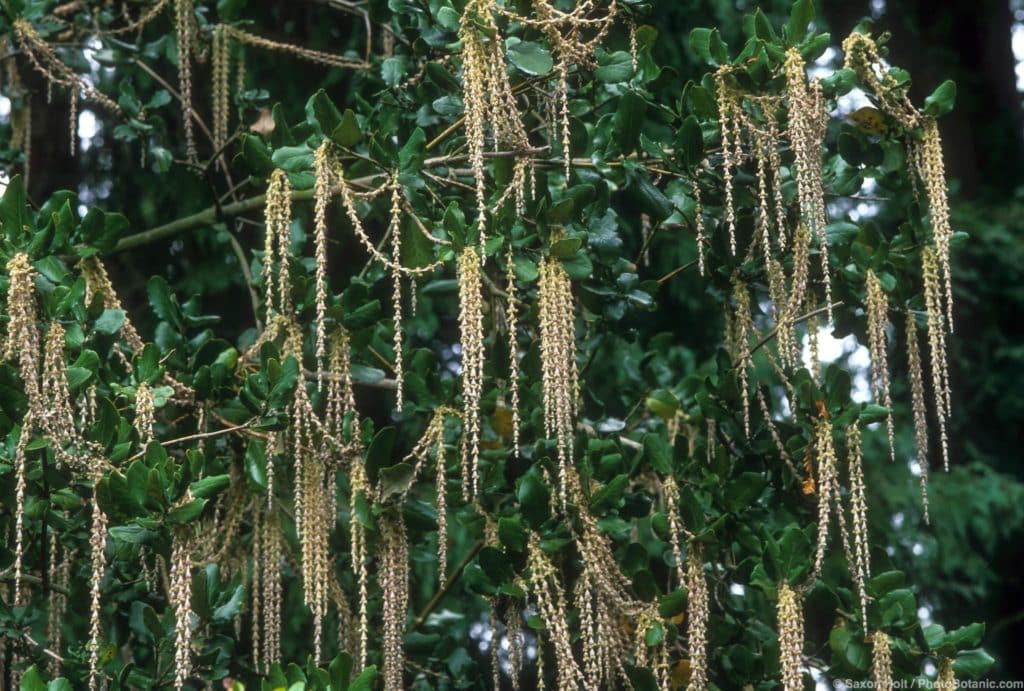
Garrya elliptica (coast silktassel) in bloom
Coast silktassel (Garrya elliptica) is best known for its elegant display of silky, silvery green to creamy white catkins that decorate the plant in mid-winter. No matter how many times you’ve seen the show, a mature silktassel in full bloom never fails to amaze and delight.
This lovely evergreen shrub is resilient and easy if you plant it where it is content. Native to coastal California and southwest Oregon, silktassel needs good drainage and, near the coast or with some afternoon shade, requires little to no summer water unless winters are exceptionally dry. On even a slight slope, with protection from the hottest sun and protracted freezing, it needs no care at all.
After a slow start, coast silktassel grows quite fast to 8 to 15 feet tall and 10 or more feet wide, usually with multiple trunks from the base. The dark green, leathery, wavy-edged leaves are woolly gray-green on the undersides. From a distance and out of bloom, the plant looks somewhat like a small evergreen oak.
On male plants the catkins may be eight or ten inches long, swaying in the slightest breeze; female catkins are only a few inches long. Both must be present for female plants to produce their purplish berries. ‘James Roof’ and ‘Evie’ are male varieties with especially showy tassels.
Coast silktassel responds assertively to pruning, sending out long, gangly branches if cut back too hard. This presents both challenges and opportunities for gardeners willing to put in the effort to train and shape. If you start when plants are established but still quite young, coast silktassel can be trained as a small tree or espaliered for maximum floral display. Pruning at maturity can be tricky because the plant may produce multiple long branches at each cut that defy further efforts to control its shape.
Silktassel seems to be unpalatable to deer, at least at maturity and in some locations. In my garden deer have never touched this plant, yet just across town newly planted garryas are regularly munched to the ground.





Leave A Comment